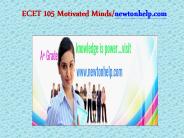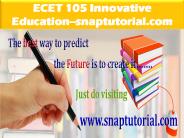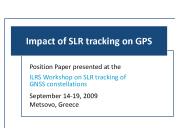Esoce PowerPoint PPT Presentations
All Time
Recommended
Modelling the 'virtual enterprise' distributed governance & decision making ... e.g. cars & their use environments. Challenges for Product Design. Systems Approach ...
| PowerPoint PPT presentation | free to view
SIMSAT 3.0 a platform independent version of ESOC's simulation ... N. Di Nisio [Terma GmbH, Darmstadt, Germany] F.Burro [Dataspazio S.p.A, Rome, Italy] ...
| PowerPoint PPT presentation | free to view
Procurement of Offload work and Services. Processes and Information ... in the supply chain can be represented by some offload works of A380 Program : ...
| PowerPoint PPT presentation | free to view
Thermo-Acoustical Insulation Blankets. GEVEN is involved in A380 Program as. Full Subcontractor ... Thermo-Acoustical Insulation Blankets ...
| PowerPoint PPT presentation | free to view
ESOC's role and responsibilities. Mission Operation Facilities ... Dec/alpha VMS version currently used phased out. PC/Windows-NT version (current baseline) ...
| PowerPoint PPT presentation | free to view
Only a tiny fraction uses web based technology for co-operative product development ... temporary alliance of independent, co-operating Companies based on the creation ...
| PowerPoint PPT presentation | free to view
Methodology and Approach for Network Partner Configuration and Assessment INNOVATION DURCH KOOPERATION, Wien, 4th October 2004 Roberto Santoro
| PowerPoint PPT presentation | free to view
... ILMAS, already involved on several aeronautical programs, signed on 2002 a ... 5.1 Industrial engineering-Documentation. 5.2 Industrial engineering -Tools ...
| PowerPoint PPT presentation | free to view
Smart objects identification/Wireless radio frequency technologies ... Efficient, effective & secure product & service creation/delivery ...
| PowerPoint PPT presentation | free to download
IST 004664. Interoperability of Virtual Organizations on Complex Semantic Grid ... 30 projects in FP5 IST: Most projects developed their own ontologies and ...
| PowerPoint PPT presentation | free to view
Europe struggles to translate technological excellence ... Geoffrey A Moore: Crossing the Chasm, 1999. Fundamental Research. Applied Research. Demonstration ...
| PowerPoint PPT presentation | free to view
Ontology: to ensure the semantical consistency of networked organisations and solutions ... a Knowledge Management System in the EI domain, based on an ontology in EI ...
| PowerPoint PPT presentation | free to view
Title: Pr sentationstitel Author: Withalm Josef Last modified by: withalm Created Date: 1/24/2006 2:04:33 PM Document presentation format: Bildschirmpr sentation
| PowerPoint PPT presentation | free to download
"COPY LINK read.softebook.xyz/power/1958727350 | PDF READ | PDF READ DOWNLOAD |DOWNLOAD PDF |PDF | PDF READ ONLINE | PDF DOWNLOAD |READ PDF | READ DOWNLOAD |get PDF Download|Download Book PDF |Read ebook PDF | PDF READ ONLINE } 3 Decades Cold Paperback – May 20, 2024 "
| PowerPoint PPT presentation | free to download
Copy Link | gooread.fileunlimited.club/srjun24/1958727350 | 3 Decades Cold Paperback – May 20, 2024 | This Handbook 0/ Geostationary Orbits is in principle an extension of the Introduction to Geostationary Orbits that was printed as a special publica tion by the European Space Agency (ESA) in 1983. The immediate purpose was to provide the theoretical background and some practical advice for the orbit control of geostationary spacecraft by means of the software package PEPSOC. PEPSOC, short for Portable ESOC Package for Synchronous Orbit Con trol , was produced by the European Space Operations Centre (ESOC) to support spacecraft operations in the routine phase. The resulting publication was a handbook for engineers and spacecraft operators, rather than a clas sical textbook in celestial mechanics. During the past eleven years, the software system PEPSOC has found a wide applicatio
| PowerPoint PPT presentation | free to download
1. Develop the Boolean equation for the circuit shown below 2. Determine the output Y in Problem 1 for the input values shown below 3. Redraw the circuit in Problem 1 using only 2-input NAND gates 4.Develop the Boolean equation for the circuit shown below 5.Determine the period of a clock waveform whose frequency is: 6.Write the VHDL text file (Entity and Architecture) for a 2-input NAND gate.
| PowerPoint PPT presentation | free to download
For more classes visit www.snaptutorial.com 1. Does a typical computer have any analog outputs? If so, what are they? 2. List three advantages of digital signal representation as compared to their analog representation. 3. Convert 126 x 10+2 to scientific and engineering notations.
| PowerPoint PPT presentation | free to download
For more course tutorials visit www.newtonhelp.com 1. Does a typical computer have any analog outputs? If so, what are they? 2. List three advantages of digital signal representation as compared to their analog representation.
| PowerPoint PPT presentation | free to download
For more course tutorials visit www.tutorialrank.com 1. Does a typical computer have any analog outputs? If so, what are they? 2. List three advantages of digital signal representation as compared to their analog representation. 3. Convert 126 x 10+2 to scientific and engineering notations. 4. Make the following conversions:
| PowerPoint PPT presentation | free to download
For more course tutorials visit www.newtonhelp.com 1. Does a typical computer have any analog outputs? If so, what are they? 2. List three advantages of digital signal representation as compared to their analog representation. 3. Convert 126 x 10+2 to scientific and engineering notations. 4. Make the following conversions:
| PowerPoint PPT presentation | free to download
For more classes visit www.snaptutorial.com 1. Does a typical computer have any analog outputs? If so, what are they? 2. List three advantages of digital signal representation as compared to their analog representation. 3. Convert 126 x 10+2 to scientific and engineering notations.
| PowerPoint PPT presentation | free to download
For more course tutorials visit www.newtonhelp.com 1. Does a typical computer have any analog outputs? If so, what are they? 2. List three advantages of digital signal representation as compared to their analog representation. 3. Convert 126 x 10+2 to scientific and engineering notations.
| PowerPoint PPT presentation | free to download
For more course tutorials visit www.newtonhelp.com 1. Does a typical computer have any analog outputs? If so, what are they? 2. List three advantages of digital signal representation as compared to their analog representation.
| PowerPoint PPT presentation | free to download
For more classes visit www.snaptutorial.com 1. Does a typical computer have any analog outputs? If so, what are they? 2. List three advantages of digital signal representation as compared to their analog representation. 3. Convert 126 x 10+2 to scientific and engineering notations. 4. Make the following conversions: a. Convert 0.34 seconds to milliseconds. b. Express 0.0005 x 10-4 farads as picofarads. 5. The frequency of a signal is equal to the reciprocal of the signal’s period (f = 1/p). For a computer with a 2.4
| PowerPoint PPT presentation | free to download
For more classes visit www.snaptutorial.com I. OBJECTIVES 1. To test the operation of a 74LS74 D flip-flop and compare the operation with the predicted behavior 2. To test the operation of a 74LS112 J-K flip-flop and compare the operation with the predicted behavior 3. To measure propagation delays of a 74LS112 J-K flip-flop 4. To build and test an enhanced adder-subtractor II. PARTS LIST
| PowerPoint PPT presentation | free to download
For more classes visit www.snaptutorial.com 1. Develop the Boolean equation for the circuit shown below 2. Determine the output Y in Problem 1 for the input values shown below
| PowerPoint PPT presentation | free to download
1. Does a typical computer have any analog outputs? If so, what are they? 2. List three advantages of digital signal representation as compared to their analog representation. 3. Convert 126 x 10+2 to scientific and engineering notations.
| PowerPoint PPT presentation | free to download
For more classes visit www.snaptutorial.com 1. Does a typical computer have any analog outputs? If so, what are they? 2. List three advantages of digital signal representation as compared to their analog representation. 3. Convert 126 x 10+2 to scientific and engineering notations.
| PowerPoint PPT presentation | free to download
1. Does a typical computer have any analog outputs? If so, what are they? 2. List three advantages of digital signal representation as compared to their analog representation. 3. Convert 126 x 10+2 to scientific and engineering notations.
| PowerPoint PPT presentation | free to download
For more course tutorials visit www.tutorialrank.com 1. Does a typical computer have any analog outputs? If so, what are they? 2. List three advantages of digital signal representation as compared to their analog representation. 3. Convert 126 x 10+2 to scientific and engineering notations. 4. Make the following conversions: a. Convert 0.34 seconds to milliseconds.
| PowerPoint PPT presentation | free to download
1. Develop the Boolean equation for the circuit shown below 2. Determine the output Y in Problem 1 for the input values shown below 3. Redraw the circuit in Problem 1 using only 2-input NAND gates 4.Develop the Boolean equation for the circuit shown below 5.Determine the period of a clock waveform whose frequency is:
| PowerPoint PPT presentation | free to download
Uophelp is now newtonhelp.com www.newtonhelp.com 1. Does a typical computer have any analog outputs? If so, what are they? 2. List three advantages of digital signal representation as compared to their analog representation.
| PowerPoint PPT presentation | free to download
Title: Ingen bildrubrik Author: Lukas K ll Last modified by: Peter Rathsman Created Date: 7/9/1998 7:40:19 AM Document presentation format: A4 (210 x 297 mm)
| PowerPoint PPT presentation | free to view
For more course tutorials visit www.newtonhelp.com 1. Does a typical computer have any analog outputs? If so, what are they? 2. List three advantages of digital signal representation as compared to their analog representation. 3. Convert 126 x 10+2 to scientific and engineering notations.
| PowerPoint PPT presentation | free to download
For more course tutorials visit Uophelp is now newtonhelp.com www.newtonhelp.com 1. Does a typical computer have any analog outputs? If so, what are they? 2. List three advantages of digital signal representation as compared to their analog representation. 3. Convert 126 x 10+2 to scientific and engineering notations.
| PowerPoint PPT presentation | free to download
For more classes visit www.snaptutorial.com 1. Does a typical computer have any analog outputs? If so, what are they? 2. List three advantages of digital signal representation as compared to their analog representation. 3. Convert 126 x 10+2 to scientific and engineering notations. 4. Make the following conversions:
| PowerPoint PPT presentation | free to download
IGS Contribution to ITRF Zuheir Altamimi & Xavier Collilieux IGN, France Outline IGS/GPS contribution to ITRF Some lessons from ITRF2005 IGS network and loading ...
| PowerPoint PPT presentation | free to download
1. Develop the Boolean equation for the circuit shown below 2. Determine the output Y in Problem 1 for the input values shown below 3. Redraw the circuit in Problem 1 using only 2-input NAND gates
| PowerPoint PPT presentation | free to download
For more course tutorials visit uophelp.com is now newtonhelp.com www.newtonhelp.com 1. Does a typical computer have any analog outputs? If so, what are they? 2. List three advantages of digital signal representation as compared to their analog representation. 3. Convert 126 x 10+2 to scientific and engineering notations. 4. Make the following conversions: a. Convert 0.34 seconds to milliseconds.
| PowerPoint PPT presentation | free to download
1. Does a typical computer have any analog outputs? If so, what are they? 2. List three advantages of digital signal representation as compared to their analog representation. 3. Convert 126 x 10+2 to scientific and engineering notations.
| PowerPoint PPT presentation | free to download
For more course tutorials visit www.tutorialrank.com 1. Does a typical computer have any analog outputs? If so, what are they? 2. List three advantages of digital signal representation as compared to their analog representation. 3. Convert 126 x 10+2 to scientific and engineering notations. 4. Make the following conversions: a. Convert 0.34 seconds to milliseconds.
| PowerPoint PPT presentation | free to download
Title: PowerPoint Presentation Author: Dr. Mark Matties Last modified by: Dr. Mark Matties Created Date: 7/17/2002 3:27:31 PM Document presentation format
| PowerPoint PPT presentation | free to view
1. Develop the Boolean equation for the circuit shown below 2. Determine the output Y in Problem 1 for the input values shown below 3. Redraw the circuit in Problem 1 using only 2-input NAND gates 4.Develop the Boolean equation for the circuit shown below
| PowerPoint PPT presentation | free to download
Probl matique et retour d exp rience du d veloppement des Logiciels embarqu s pour le spatial Paul ARBERET
| PowerPoint PPT presentation | free to view
... and monitoring of multiple satellite missions and network of ... Take photos of the control room: (see following s) Erik Gottschalk Dec. 7, 2005 ...
| PowerPoint PPT presentation | free to download
... (for ITRF only IDS made use of this satellites) Connect the techniques in space ( space-ties ) using the local ties between the on-board instruments ...
| PowerPoint PPT presentation | free to download
The Wind Lidar Mission ADM-Aeolus Data Processing David Tan Research Department ECMWF Acknowledgements: ESA (Mission Science & Aeolus project team) Aeolus ...
| PowerPoint PPT presentation | free to download
Title: The DSP implementation of the decoder Author: Guido Montorsi Last modified by: rmadde Created Date: 6/17/1995 11:31:02 PM Document presentation format
| PowerPoint PPT presentation | free to download
Title: Author: Sergey Revnivykh Last modified by: Serg Revnivykh Created Date: 4/2/2005 11:47:14 AM Document ...
| PowerPoint PPT presentation | free to view
Title: Frequentie van voorkomen van gebeurtenissen Author: esoc Last modified by: weyler Created Date: 11/8/1996 8:06:22 AM Document presentation format
| PowerPoint PPT presentation | free to download
GALILEO Dr. Budai Bal zs Benj min Budapesti Corvinus Egyetem K zigazgat studom nyi Kar K zigazgat s-Szervez si s Urbanisztikai Tansz k
| PowerPoint PPT presentation | free to view
Features of New GNSS software at ESOC, Napeos: Very fast! 30 minutes for a full final solution from scratch ... IERS Sub-daily Polar Motion model too simple? ...
| PowerPoint PPT presentation | free to download
SLR tracking data for GPS satellites are not used in routine GPS ... [1999], Improving the orbit estimated of GPS satellites, Journal of Geodesy, 73(3), 147-157 ...
| PowerPoint PPT presentation | free to download
US ARMY CENTER FOR HEALTH PROMOTION AND PREVENTIVE MEDICINE ... Travel Health Web Sites: CDC, WHO, State Department. http://www.who.int/home-page ...
| PowerPoint PPT presentation | free to view
N A S A - ESDIS Science Data Network. J. Smith, A. Germain 3 April 2000 ... 512 kbps science channel on private E1 replaced by TransPAC for Science traffic ...
| PowerPoint PPT presentation | free to view














![Download❤[READ]✔ 3 Decades Cold Paperback – May 20, 2024 PowerPoint PPT Presentation](https://s3.amazonaws.com/images.powershow.com/10066838.th0.jpg)









































